During the wet months, Windsor Creek flows nearly 9 miles from the hills northwest of Windsor. Seasonal creeks and streams are the unsung heroes of the watershed because they prevent flooding, filter out pollutants, and provide healthy habitat. Russian Riverkeeper has been working over the last 5 years to restore this mighty wonder.
Birkin Newell, education and restoration director, came on board to work on this project, which was developed to mitigate damage done to Airport Creek when the runway at Santa Rosa airport was lengthened. This location was chosen for its public benefit as a popular trail for recreation and dog walking.
The team first worked to stabilize 300 feet of stream bank, which was severely undercut and in danger of failing and potentially flooding the neighborhood. The bank was re-graded and stabilized with native plants (or so we thought). Restoration projects are a balance of science, art and a little luck from good weather. The bank ended up needing additional work to hold up after storms from an atmospheric river, so during the Tubbs Fire in 2017, the team came back with an excavator to re-shape the bank. They also created a more heavily-reinforced waterline with giant boulders and logs , and additional bio-engineering techniques including installing fresh willow cuttings and jute netting fabric to hold the soil tightly during high water events. This new bank layback is holding strong. Russian Riverkeeper will continue to monitor it for five years and make annual reports to Fish and Wildlife to share progress.
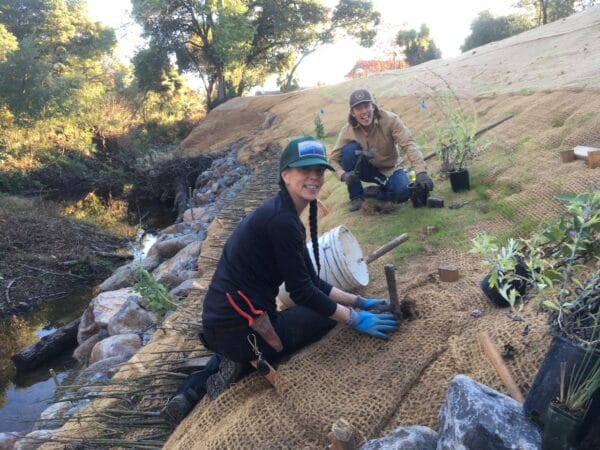
Anastasia and Chase planting the newly stabilized bank in late 2017.
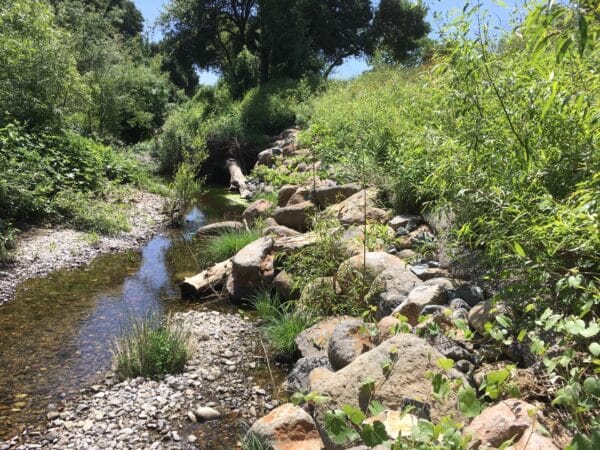
The bank layback looking splendid only 1.5 years later. The green willow cuttings took root, helping to stabilizing the soil and also grew leaves to provide shade and habitat.
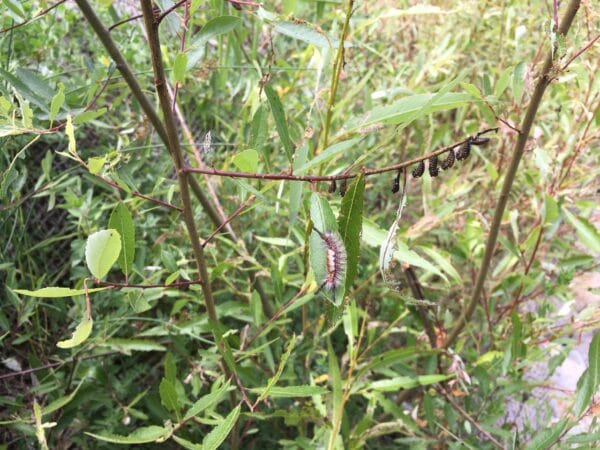
The insects love the willows for a food source, as evidence by these insect larvae and caterpillar.
Next, the team worked to restore healthy riparian plant habitat. Riparian areas supply food, cover, and water for a large diversity of animals and serve as migration routes and stopping points between habitats for a variety of wildlife. Eleven sites around and downstream of the bank layback were selected based on heavy invasive plant coverage and where canopy gaps occurred along the reach. Tough invasive plants including Vinca, Himalayan blackberry, Acacia trees, Privet, Broom, Pyracantha, and Harding grass were removed to make way for native plants. Tackling these nuisance species required careful sheet mulching to preserve any native plants and young trees while smothering invasive weeds. The most fun part of the project was including community volunteers, school groups, and an Americorps crew in planting. The native plants create a thriving habitat by providing food, shelter, larval host forage, and shade for native birds, insects, and other wildlife.
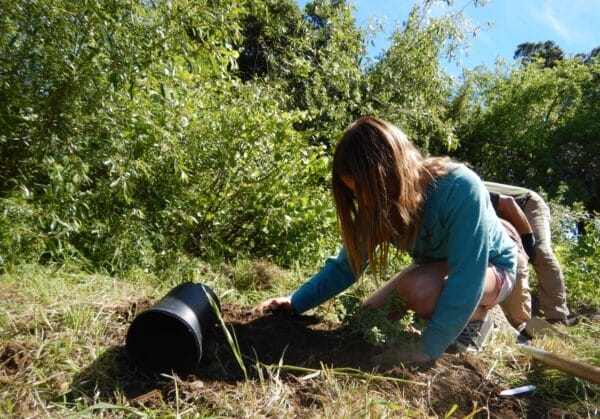
Volunteers transplanting native plants. Involving the local community is the most fun part of the work!
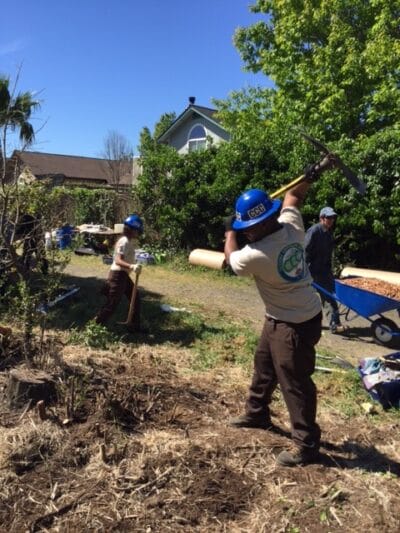
California Conservation Crew hard at work removing weeds.
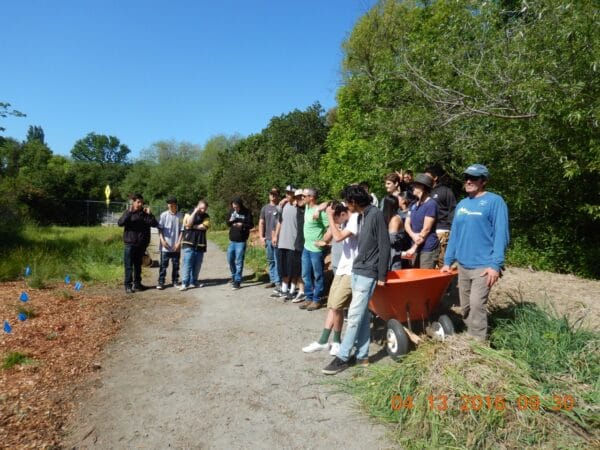
Students from the Windsor Oaks Academy helping out, thanks to their teacher Jeremiah Kahmoson (in center of group photo with green t-shirt).
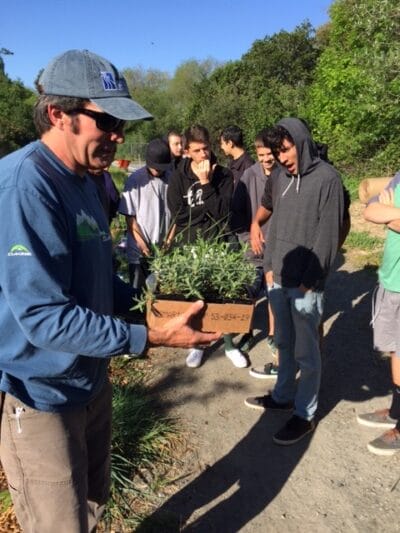
Birkin leading hands-on education with students from Windsor Oaks Academy.
The thriving creek also makes a beautiful spot to walk. Stop and say hello when you see Russian Riverkeeper staff watering, weeding, and documenting the restoration project. You can also show this special place a little love by picking up trash.
